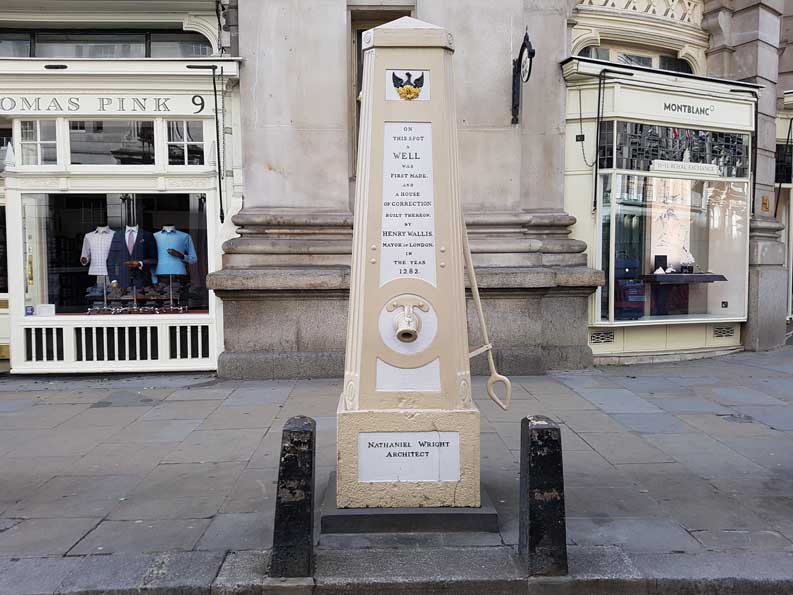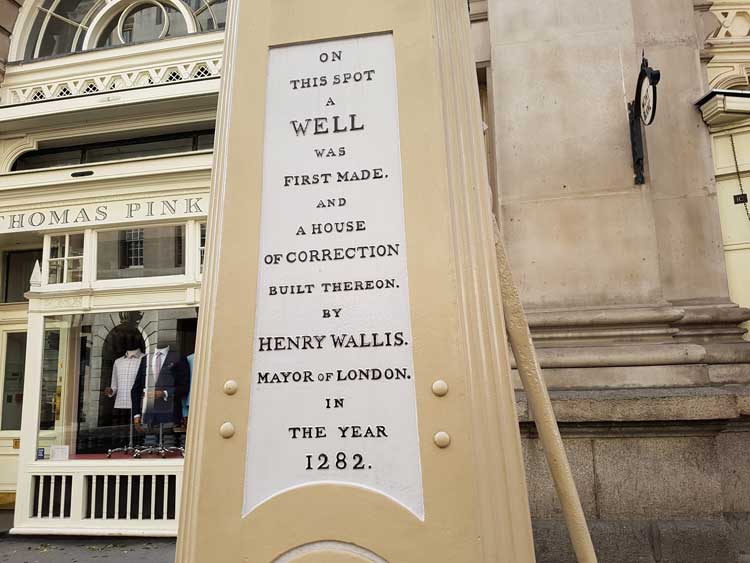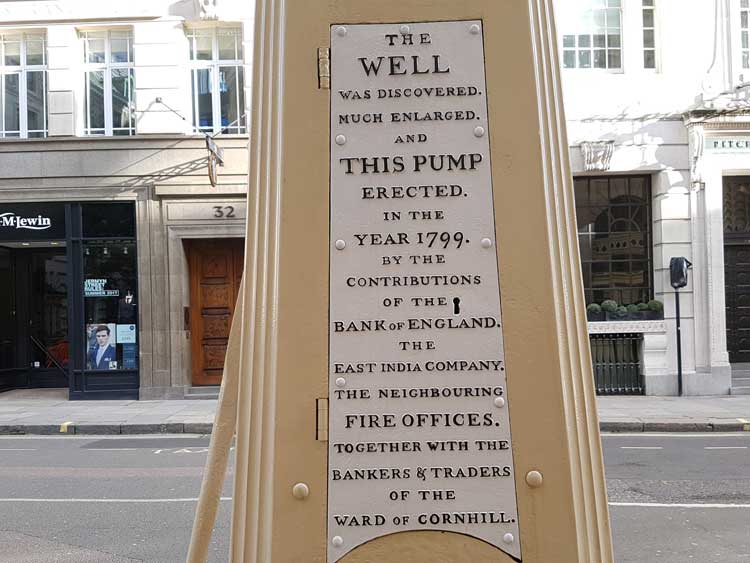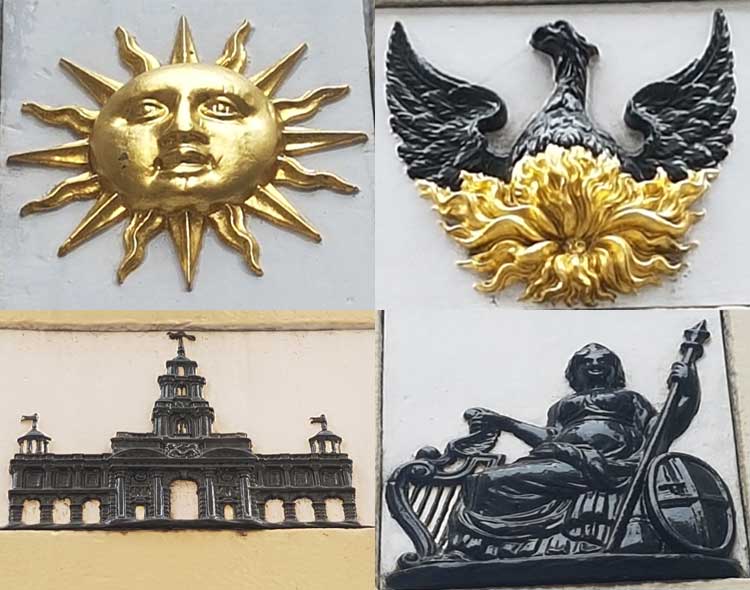
By the roadside, on the pavement directly outside the south-east corner of the Royal Exchange, you will find the Cornhill Pump, a true remint from days long gone.
The pump dates from 1799 and was financed by several City of London institutions, including, the Bank of England, the East India Company, with further financial assistance coming from the neighbouring fire offices and local bankers and traders of the area.
By the early 2000's the pump was in a sad a sorry state, but, following a recent renovation it now looks particular splendid, it it is well worth taking a few moments on your jaunt along Cornhill to examine and explore this delightful old relic.
An inscription on the road side of the pump provides a little of its history. It reads:-
"On This Spot A Well Was First Made And A House Of Correction Built Thereon. By Henry Wallis Mayor Of London In The Year 1282."

However, with the passage of time, the House of Correction crumbled into dust - or at least was demolished - and the well was forgotten.
But then, in 1799, the well was rediscovered, and an inscription on the reverse side of the pump - the pavement side - informs of what happened next:-
"The Well Was Discovered. Much Enlarged, And This Pump Erected In The Year 1799. By The Contributions Of The Bank Of England. The East India Company. The Neighbouring Fire Offices. Together With The Bankers & Traders Of The Ward Of Cornhill."

The pump is adorned with the marks of four fire offices or insurance companies - the Sun, Phoenix, London and Royal Exchange - a sort of 18th century "sponsored by" device no doubt intended to ensure that the local citizens saw each name prominently displayed whenever they came to draw water from the pump.

These fire insurance companies each employed their own fire brigades who would wear the livery, or uniform of that company, and each man would have the emblem of the company for which he worked emblazoned on his sleeve.
When someone insured their property with a particular company, they would be issued with a cast iron plate, again displaying the companies symbol or logo, which they would then affix to the outside of their property.
In the event of a property catching fire the householder would then call out the brigade of their insurance company and the officers of that particular would then arrive at the blazing property to fight the fire.
However, before they would attempt to do so they would search the exterior for the mark or plate of their company, to ensure that the householder was covered by a policy issued by their company and so the claim was a legitimate one. Only then would they begin attempts to bring the fire under control.